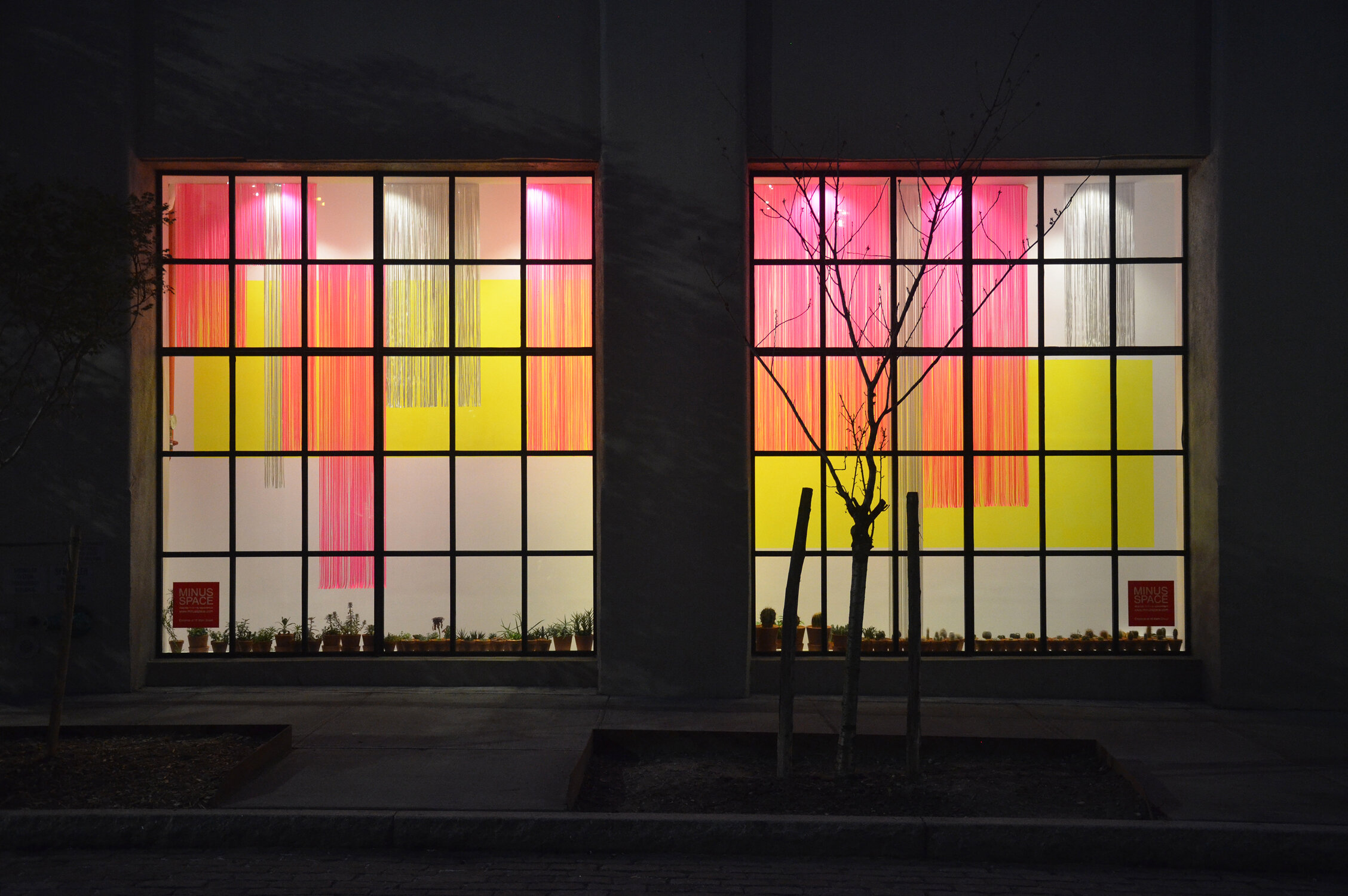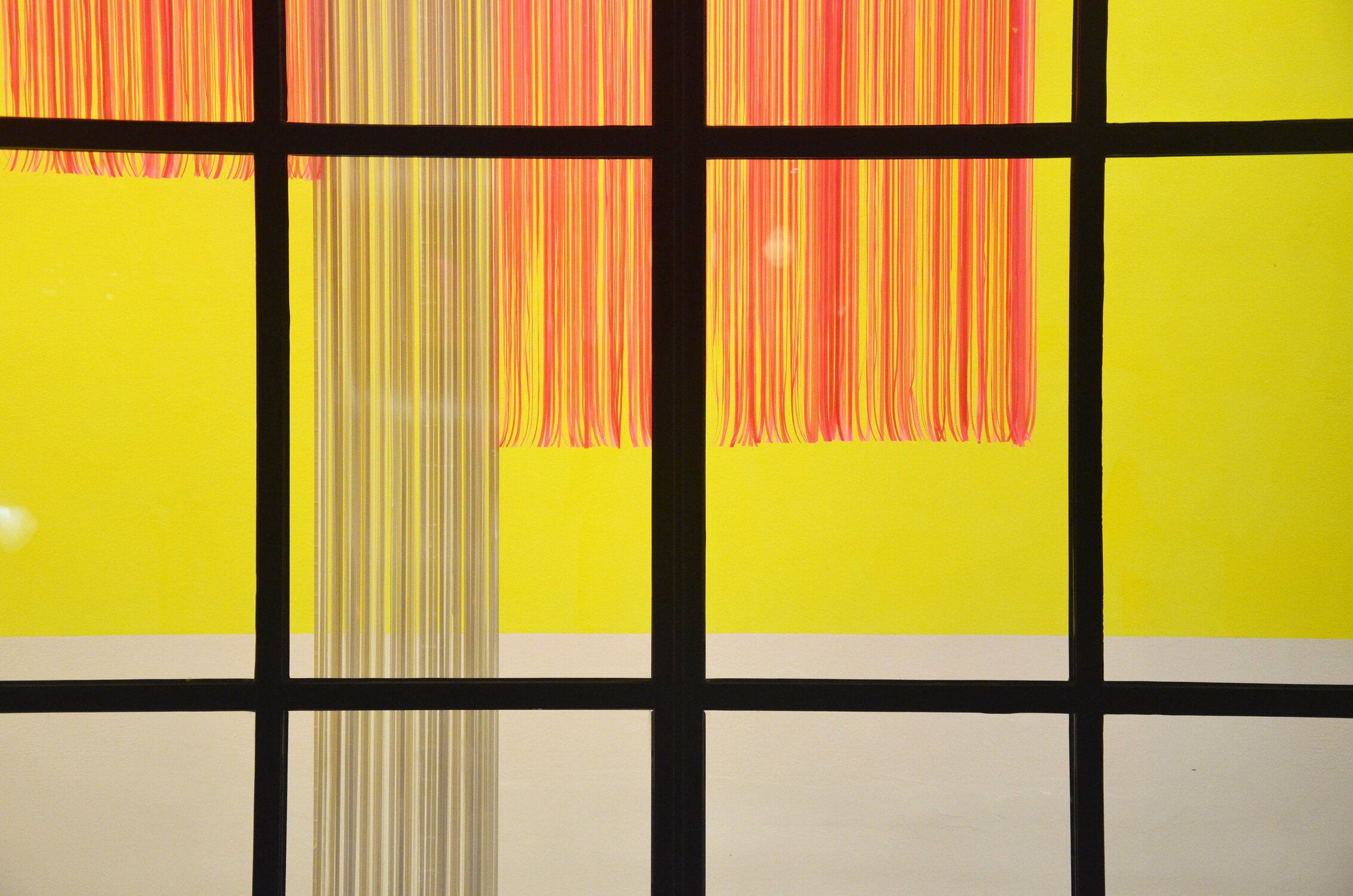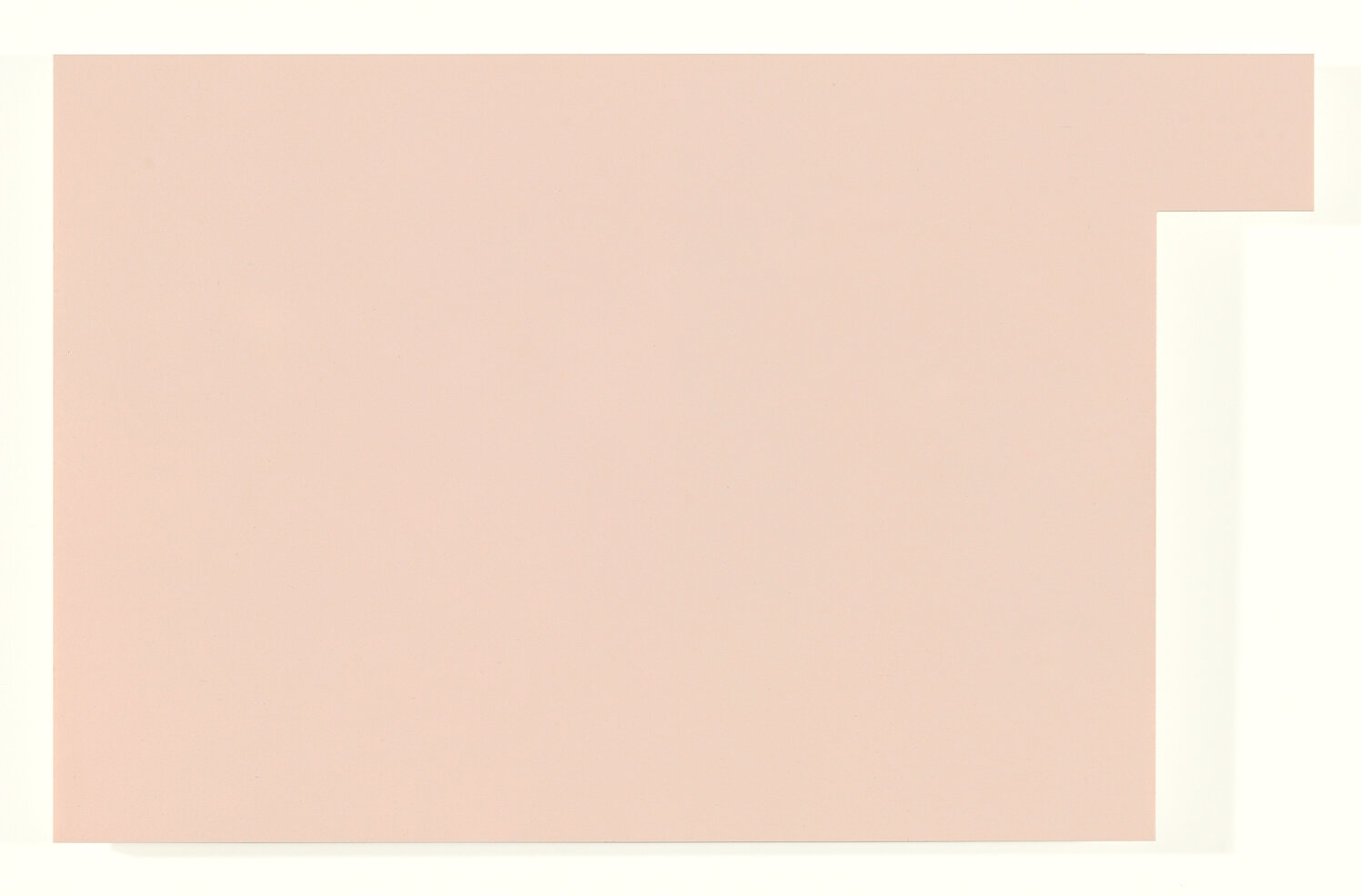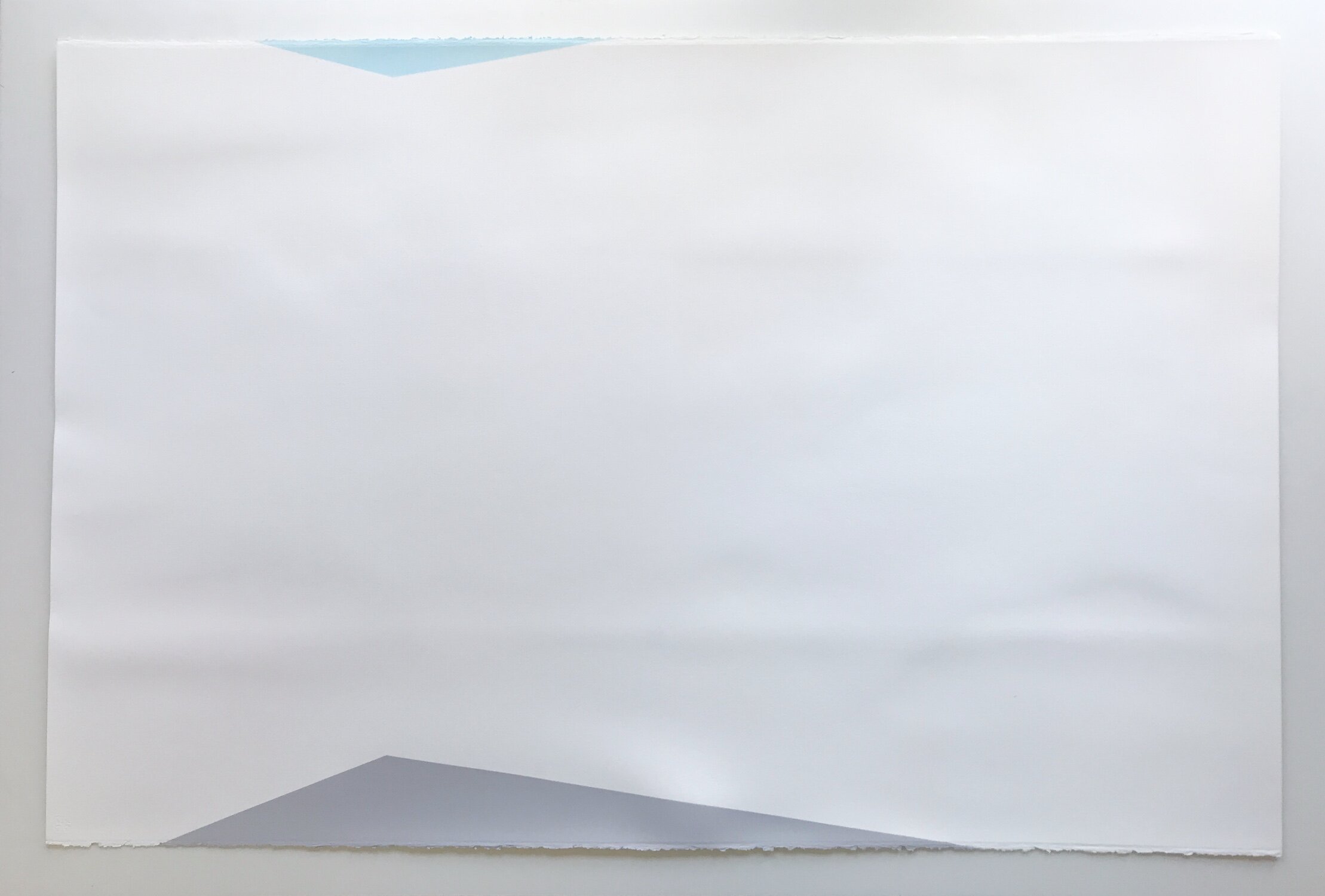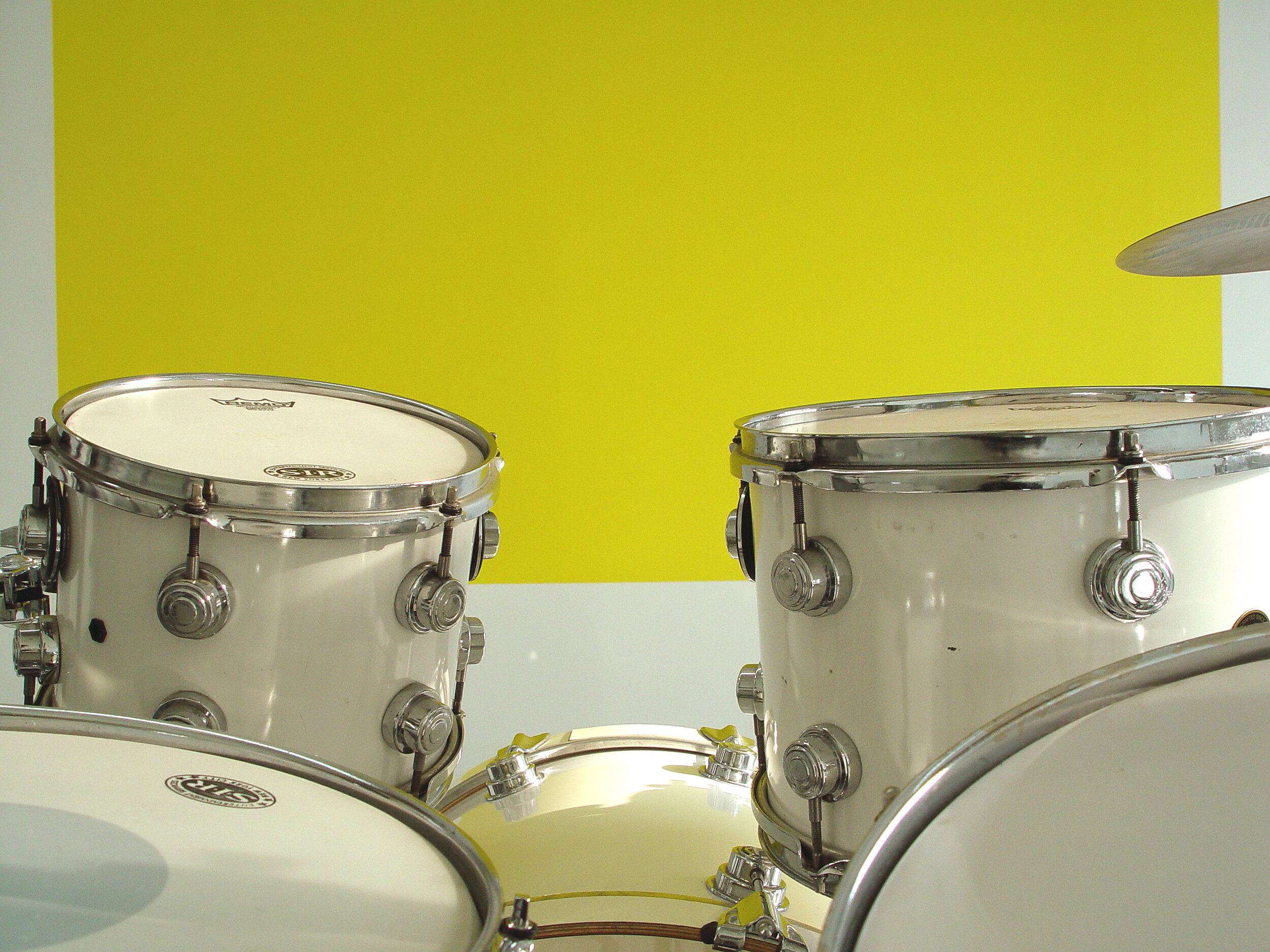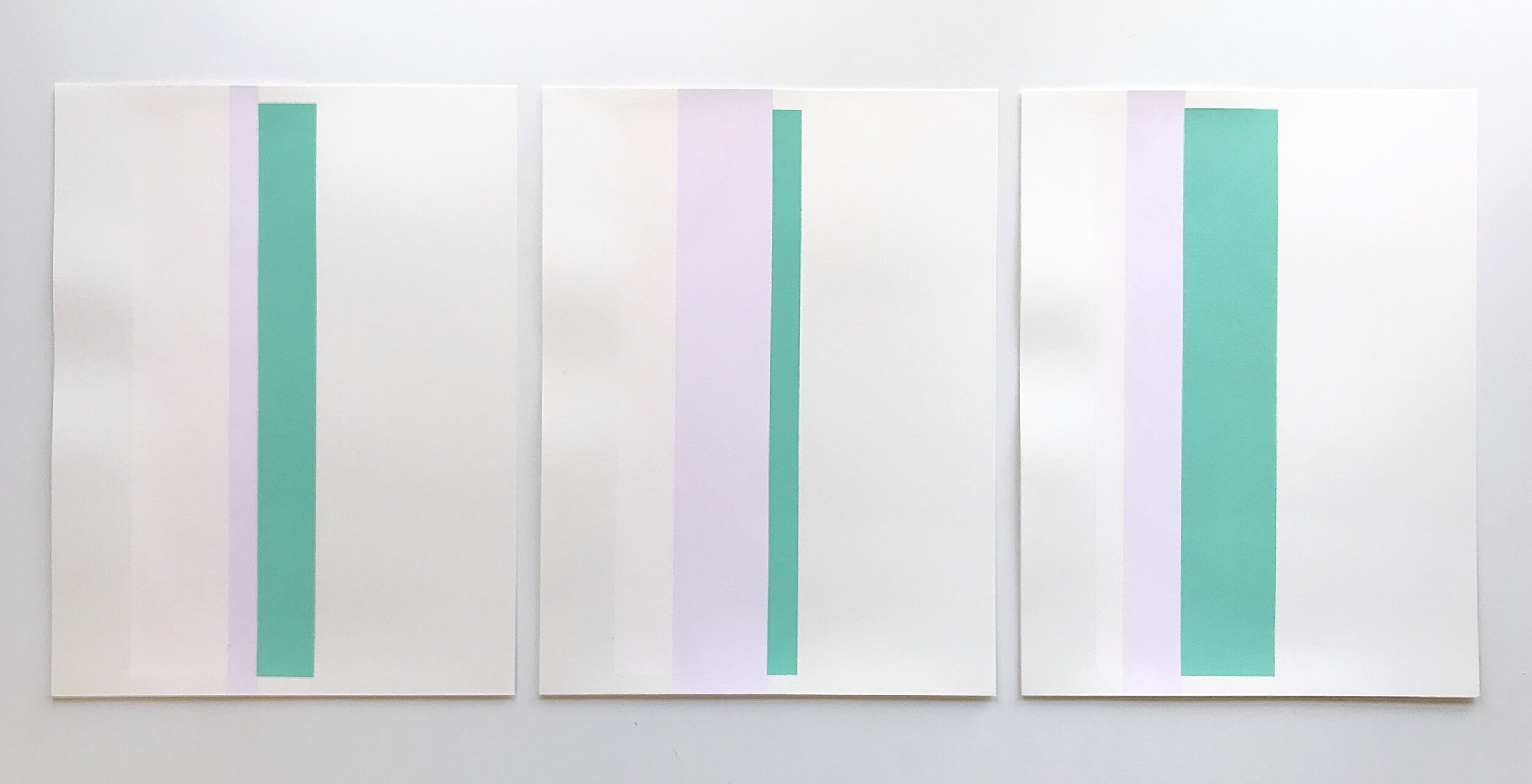Lynne Harlow: Tilt Toward the Sun, 2018, Vinyl rain curtain and latex paint on wall, Dimensions variable, Installation view at MINUS SPACE, Brooklyn, NY, 2018
Lynne Harlow: Tilt Toward the Sun, 2018, Vinyl rain curtain and latex paint on wall, Dimensions variable, Installation view at MINUS SPACE, Brooklyn, NY, 2018
Lynne Harlow: Tilt Toward the Sun, 2018, Vinyl rain curtain and latex paint on wall, Dimensions variable, Installation view at MINUS SPACE, Brooklyn, NY, 2018
Lynne Harlow: Tilt Toward the Sun, 2018, Vinyl rain curtain and latex paint on wall, Dimensions variable, Installation view at MINUS SPACE, Brooklyn, NY, 2018
Lynne Harlow: Tilt Toward the Sun, 2018, Vinyl rain curtain and latex paint on wall, Dimensions variable, Installation view at MINUS SPACE, Brooklyn, NY, 2018
Lynne Harlow: Tilt Toward the Sun, 2018, Pink and white vinyl rain curtain and yellow latex paint on wall, Dimensions variable, Installation view at MINUS SPACE, Brooklyn, NY, 2018
Lynne Harlow, Horizon 3, 2017, Ceramic tile, aluminum channel, 4 x 31.25 x 1 inches, #LH50
Lynne Harlow, Horizon 7, 2017, Ceramic tile, aluminum channel, 4 x 14.75 x .5 inches, #LH51
Lynne Harlow, Horizon 8, 2017, Ceramic tile, aluminum channel, 4 x 8 x .5 inches, #LH52
Lynne Harlow, Baker Bridge Road 6, 2015, Pigment on acrylic, LED lights, wood base, 23 x 20 x 3 inches / 58 x 51 x 8 cm, #LH45 - ON HOLD
Lynne Harlow, Baker Bridge Road 10, 2015, Projected light, colored gels on wall, Dimensions variable (90 inches / 230 cm or larger), #LH49
Lynne Harlow, Baker Bridge Road 4, 2015, Acrylic paint on Plexiglas, 10 x 16 x .25 inches / 25 x 41 x .6 cm, #LH43
Lynne Harlow, Baker Bridge Road 3, 2015, Acrylic paint on Plexiglas, 2 panels, each 5.5 x 5.5 x .5 inches, #LH42
Lynne Harlow, Baker Bridge Road 1, 2015, Acrylic paint on Plexiglas, 4 x 4 x 1 inches / 10 x 10 x 2.5 cm, #LH41
Lynne Harlow, Baker Bridge Road 2, 2015, Acrylic paint on Plexiglas, 8.75 x 8.75 x .5 inches / 22 x 22 x 1.3 cm, #LH39
Lynne Harlow, Baker Bridge Road 9, 2015, Acrylic paint on wall, 70 x 70 inches / 178 x 178 cm, #LH48
Lynne Harlow, Like a Razor Blade Under the Tongue, 2013, White rain curtain with fluorescent green and white plexiglas, 12 x 12 x 1.5 inches, #LH25
Lynne Harlow, Against the Velvet of the Long Goodbye, 2013, Site-specific performance installation, white vinyl rain curtain, colored floodlights, electric guitar, guitar stand, amp, Dimensions variable, #LH35
Lynne Harlow, Against the Velvet of the Long Goodbye (detail), 2013, Site-specific performance installation, white vinyl rain curtain, colored floodlights, electric guitar, guitar stand, amp, Dimensions variable, #LH35
Lynne Harlow, Against the Velvet of the Long Goodbye (detail), 2013, Site-specific performance installation, white vinyl rain curtain, colored floodlights, electric guitar, guitar stand, amp, Dimensions variable, #LH35
Lynne Harlow, Measuring a Summer's Day, 2012, Vinyl curtain, acrylic paint, Dimensions variable, Installation view in MINUS SPACE en Oaxaca, Museum of Contemporary Art, Oaxaca, Mexico, 2012
Lynne Harlow, Measuring a Summer's Day, 2012, Vinyl curtain, acrylic paint, Dimensions variable, Installation view in MINUS SPACE en Oaxaca, Museum of Contemporary Art, Oaxaca, Mexico, 2012
Lynne Harlow, Measuring a Summer's Day, 2012, Vinyl curtain, acrylic paint, Dimensions variable, Installation view in MINUS SPACE en Oaxaca, Museum of Contemporary Art, Oaxaca, Mexico, 2012
Lynne Harlow, Measuring a Summer's Day #1, 2013, Acrylic on paper, 26 x 40 inches, #LH16
Lynne Harlow, Measuring a Summer's Day #2, 2013, Acrylic on paper, 26 x 40 inches, #LH17.
Lynne Harlow, Measuring a Summer's Day #3, 2013, Acrylic on paper, 26 x 40 inches, #LH18
Lynne Harlow, Measuring a Summer's Day #4, 2013, Acrylic on paper, 26 x 40 inches, #LH19
Lynne Harlow, Measuring a Summer's Day #5, 2013, Acrylic on paper, 26 x 40 inches, #LH20
Lynne Harlow, Measuring a Summer's Day #6, 2013, Acrylic on paper, 26 x 40 inches, #LH21
Lynne Harlow, BEAT, 2007, Acrylic paint, drum kit, live performance, Painted square 8.5 x 8.5 feet, Performance installation at MINUS SPACE, Brooklyn, NY, 2007
Lynne Harlow, BEAT (detail), 2007, Acrylic paint, drum kit, live performance, Painted square 8.5 x 8.5 feet, Installation view at MINUS SPACE, Brooklyn, NY, 2007
Lynne Harlow, BEAT (detail), 2007, Acrylic paint, drum kit, live performance, Painted square 8.5 x 8.5 feet, Performance installation at MINUS SPACE, Brooklyn, NY, 2007
Lynne Harlow, Fermata (side view), 2012, Fender amplifier grill cloth on stretcher, 19 x 28 x 2.5 inches, #LH36
Lynne Harlow, Shine Like a Song, 2007, Copper pipe, gold plated chain (7 inches left side, 17 inches right side), 36 x 17 x 1 inches, #LH11
Lynne Harlow, Papaver 1-3, 2008, Acrylic paint on paper, 12 x 16 inches, #LH04
Lynne Harlow, Dedicated to All You Are 1-6, 2008, Acrylic paint and light blue crystals on paper, 19.5 x 26 inches, #LH03 - Part 1 of 6
Lynne Harlow, Dedicated to All You Are 1-6, 2008, Acrylic paint and light blue crystals on paper, 19.5 x 26 inches, #LH03 - Part 2 of 6
Lynne Harlow, Dedicated to All You Are 1-6, 2008, Acrylic paint and light blue crystals on paper, 19.5 x 26 inches, #LH03 - Part 3 of 6
Lynne Harlow, Dedicated to All You Are 1-6, 2008, Acrylic paint and light blue crystals on paper, 19.5 x 26 inches, #LH03 - Part 4 of 6
Lynne Harlow, Dedicated to All You Are 1-6, 2008, Acrylic paint and light blue crystals on paper, 19.5 x 26 inches, #LH03 - Part 5 of 6
Lynne Harlow, Dedicated to All You Are 1-6, 2008, Acrylic paint and light blue crystals on paper, 19.5 x 26 inches, #LH03 - Part 6 of 6
Lynne Harlow, Göcek 1-3, 2008, Pink thread and matte medium on paper, 22.5 x 30 inches, #LH05 - Part 1 of 3
Lynne Harlow, Göcek 1-3, 2008, Pink thread and matte medium on paper, 22.5 x 30 inches, #LH05 - Part 2 of 3
Lynne Harlow, Göcek 1-3, 2008, Pink thread and matte medium on paper, 22.5 x 30 inches, #LH05 - Part 3 of 3
Lynne Harlow, Lokum, 2006, White plexiglas painted orange on the backside, brass nails inserted through holes in plexiglas , 12 x 12 inches, #LH10
Lynne Harlow, Annunciation 1-5, 2006, Gouache and acrylic paint on paper, 8 x 8 inches, #LH06
Lynne Harlow, Perfect Dresser 1-6, 2005, Gouache on paper, 8 x 8 inches, #LH07
Biography
Lynne Harlow (b. 1968 Attleboro, MA; lives Providence, RI) has exhibited her work nationally and internationally for the past 15 years, including in the United States, Mexico, France, Germany, Italy, Norway, Australia, New Zealand, and Japan. Here at the gallery, she has mounted three very well-received solo exhibitions – Ask the Sky, Baker Bridge Road (2016), Against the Velvet of the Long Goodbye (2013), and BEAT (2007). She also participated in our recent group exhibition Fiber Optic (2015), as well as our large survey exhibitions MINUS SPACE en Oaxaca: Panorama de 31 artistas internacionales, Oaxaca, Mexico (2012) and MINUS SPACE curated by Phong Bui at MoMA/PS1 (2008-2009).
Harlow’s work was included in the 2013 deCordova Biennial at the deCordova Sculpture Park and Museum, Lincoln, MA. Her additional museum exhibitions include MoMA PS1 (New York, NY); Herbert F. Johnson Museum of Art (Ithaca, NY); Brattleboro Museum and Art Center (Brattleboro, VT); and Instituto de Artes Gráficas de Oaxaca (Oaxaca, Mexico).
Harlow has received awards from the Pollock-Krasner Foundation, Chinati Foundation, Rhode Island Foundation, and BAU Institute, and her work has been reviewed in publications, such as Artforum, The New York Times, The Boston Globe, The Providence Journal, and Artnet Magazine, among others.
Harlow’s work is included in public collections, such as The Museum of Modern Art, Metropolitan Museum of Art, New York Public Library, and Hunter College (all New York, NY); RISD Museum (Providence, RI); and The Philips Collection (Washington, DC).
Harlow holds an MFA from Hunter College and a BA from Framingham State College.
Statement
How little is enough? How much can be taken away before a piece crumbles? I arrive at my pieces by reducing physical and visual information. This process of reduction, a steady taking away, is ultimately intended to be an act of generosity. In each piece I’m looking for the point at which these reductions allow me to give the most. It’s an appealing contradiction because it prompts one to reconsider the concept of abundance and the nature of giving.
Gallery Exhibitions
Twenty, June 24 - September 30, 2023
Lynne Harlow: Lodestar, April 1 - June 10, 2023
Untitled (Summer), July 19 - August 24, 2019
Lynne Harlow: Tilt Toward the Sun, June 1-30, 2018
Lynne Harlow: Ask the Sky, Baker Bridge Road, February 27 – April 9, 2016
Fiber Optic, November 7 – December 19, 2015
Lynne Harlow: Against the Velvet of the Long Goodbye, November 1 – December 21, 2013
Minus Space, MoMA PS1, NYC, October 19, 2008 – May 4, 2009
Lynne Harlow: BEAT, December 2007
Escape from New York, Sydney Non Objective, Sydney, Australia, August 3 – September 2, 2007


